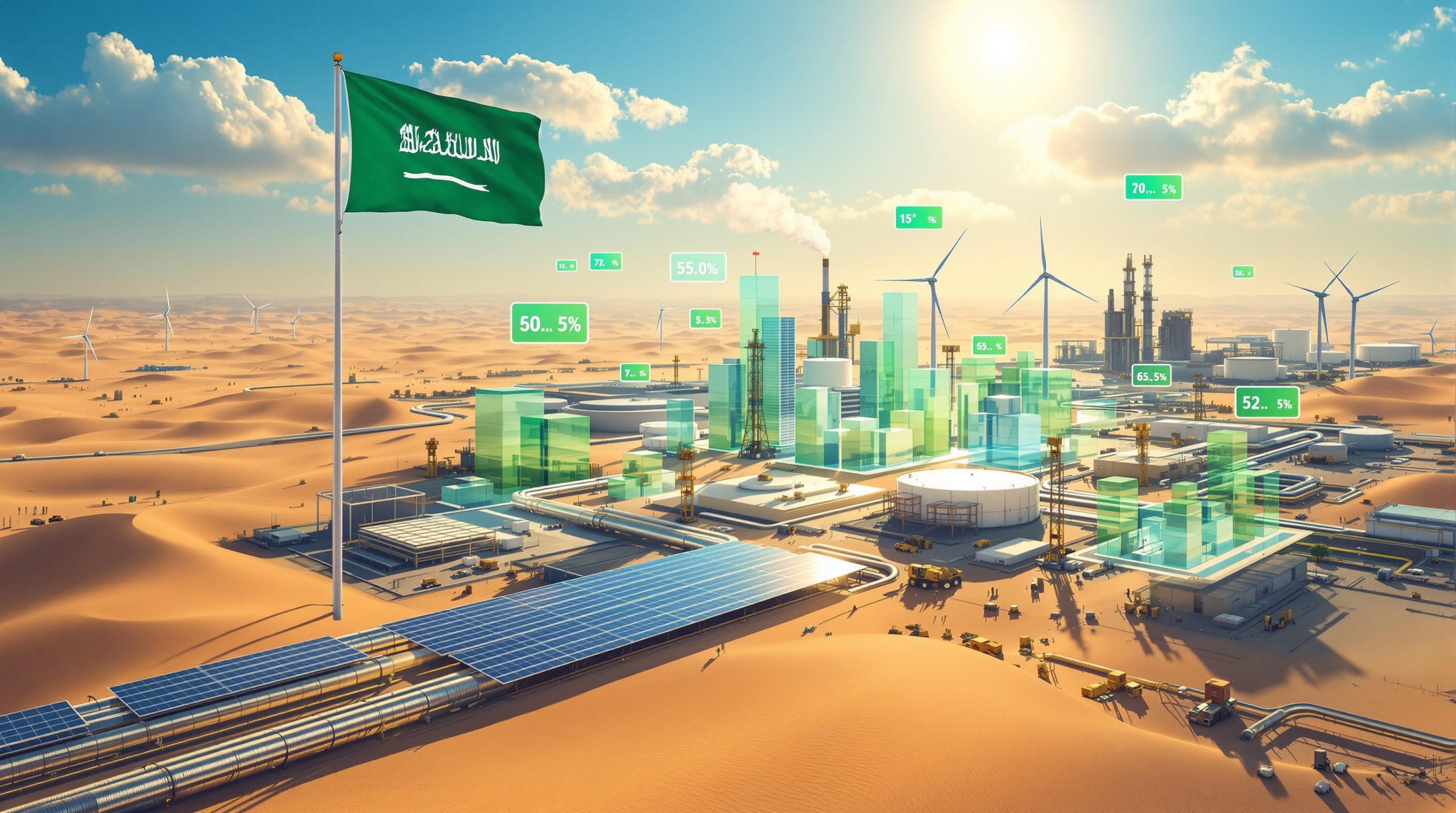Revolutionizing Critical Minerals Processing: Industry Veteran Launches Innovative Venture
The critical minerals processing sector is undergoing a significant transformation as industry veterans leverage their expertise to address processing bottlenecks. This shift comes at a crucial time when governments worldwide are prioritizing domestic supply chains for materials essential to technology, defense, and clean energy applications.
Current Processing Challenges in Western Markets
Western nations face substantial challenges in critical minerals processing, creating strategic vulnerabilities across multiple industries. The United States currently processes less than 10% of critical minerals domestically, highlighting a severe capacity gap in the supply chain (Congressional Research Service, "Critical Minerals and U.S. Public Policy," 2023).
Limited domestic processing capacity has created a problematic dependency on overseas refinement, particularly in Asian markets. This dependency has evolved into a pressing national security concern, especially as demand continues to surge from AI development, defense applications, and the renewable energy sector.
Traditional processing methods compound these challenges with:
- High energy requirements, often demanding temperatures above 1,000°C
- Multiple processing stages requiring significant time investments
- Substantial waste generation—typically 2-5 tons of waste per ton of processed material
- Extended supply chains with transportation times from Asia to North America averaging 30-45 days
The COVID-19 pandemic clearly demonstrated these vulnerabilities, causing processing delays of 6-12 weeks for various critical minerals and disrupting supply chains across multiple industries (McKinsey & Company, "Critical Materials for the Energy Transition," 2022).
The Strategic Importance of Processing Innovation
Processing represents the most significant bottleneck in critical minerals supply chains—more than mining capacity itself (S&P Global Market Intelligence, "Critical Minerals Processing Report," 2024). This bottleneck has pushed Western nations to actively seek solutions that reduce dependency on foreign processing.
Recent technological advancements offer potentially game-changing breakthroughs in cost efficiency, processing speed, and environmental impact. These innovations come at a crucial time, as environmental considerations increasingly drive demand for cleaner processing methods that minimize waste generation and energy consumption.
Investment interest in processing technologies has surged accordingly, with venture capital firms increasingly distinguishing between mining operations and processing innovations. Critical minerals processing startups raised $2.3 billion in 2023 alone, representing a 340% increase from 2021 levels (PitchBook, "Critical Materials Venture Investment Report," 2024).
Who is Behind the New Critical Minerals Processing Venture?
The new critical minerals processing company, Valor, was established by Kunal Sinha, who departed from his position at Glencore after a nearly 14-year tenure. This strategic career shift represents a significant industry development, with Sinha leveraging his extensive experience to address one of the most pressing challenges in critical minerals supply chains.
Leadership Background and Expertise
Sinha's background provides him with unique qualifications to lead this venture:
- Nearly 14 years at Glencore in various leadership roles
- Most recently served as head of Glencore's recycling division until Friday, September 6, 2025
- Specialized experience in processing materials from electronic waste and batteries
- Currently serves as advisor to rare earth magnet startup REalloys
- Investor in magnesium processing startup Magrathea
- Deep understanding of global mineral supply chains and processing challenges
This combination of operational experience and strategic vision positions Sinha to understand both the technical and commercial aspects of minerals processing.
Strategic Vision for the New Venture
Sinha has articulated a clear rationale for launching Valor, highlighting that "there is a lot of value to be created by improving (minerals) processing in the West" (Mining.com, September 8, 2025). This perspective reflects a growing recognition that processing represents a critical value-add opportunity within mineral supply chains.
Valor was officially formed on Monday, September 9, 2025, just three days after Sinha's departure from Glencore (Mining.com, September 8, 2025), indicating both careful planning and strategic timing. The company's establishment in New York positions it to capitalize on proximity to financial markets, research institutions, and potential government support programs.
The venture appears strategically timed to coincide with increasing government focus on securing domestic supply chains for critical minerals, particularly as geopolitical tensions highlight vulnerabilities in international supply networks.
What Innovative Technology Will the New Company Deploy?
Valor's competitive advantage centers on a novel processing technology developed at the University of Illinois at Urbana-Champaign. This innovation represents a potential paradigm shift in how critical minerals are processed, offering solutions to many long-standing industry challenges.
How the Technology Works
The technology employs a sophisticated approach to mineral separation:
- Uses specialized ligand molecules that selectively bind to specific metals
- Employs electrochemical processes to separate targeted minerals
- When placed in solution with an applied electric current, ligands bind to specific metals
- Offers programmable selectivity for specific metals like copper or rare earths
- Can be configured to target certain metals while avoiding others (e.g., binding to copper but not nickel)
- Applicable across diverse material sources including primary ores, recycled materials, and potentially deep-sea nodules
This approach differs fundamentally from conventional processing methods that typically rely on chemical leaching, pyrometallurgical processes, or solvent extraction techniques.
Potential Advantages Over Traditional Methods
According to preliminary information, the technology offers several significant advantages:
- Potentially "at least ten times cheaper and faster than traditional processing methods" (Mining.com, September 8, 2025)
- Zero waste generation potential, compared to conventional methods that typically generate 2-5 tons of waste per ton of processed material
- Highly selective extraction capabilities that can target specific metals with precision
- Flexibility to process various input materials from different sources
- Potential for smaller, more distributed processing facilities closer to material sources or end markets
Important note: While these claimed advantages are promising, they require validation through commercial-scale demonstration. Laboratory-proven technologies often face unforeseen challenges when scaling to industrial production levels (MIT Technology Review, "The Valley of Death in Cleantech," 2023).
Why is Critical Minerals Processing Gaining Strategic Importance?
The processing of critical minerals has emerged as a crucial focus area for national security and economic development strategies, particularly in Western nations seeking to reduce dependency on foreign suppliers.
Geopolitical Context and Supply Chain Security
Critical minerals processing has become a focal point in geopolitical strategy for several compelling reasons:
- China currently dominates global processing capacity, controlling approximately 90% of rare earth elements processing, 70% of cobalt processing, and 60% of lithium processing (International Energy Agency, 2023)
- The U.S. imports over 50% of its supply for 47 mineral commodities, with complete import reliance for 17 critical minerals (U.S. Geological Survey, 2024)
- Western governments are implementing aggressive policies to encourage domestic processing capacity development
- The U.S. Department of Defense allocated $400 million for rare earth processing initiatives in 2024 alone (Defense Production Act investments, DOD, 2024)
- Supply chain vulnerabilities were starkly exposed during recent global disruptions, particularly during the COVID-19 pandemic
These factors have elevated processing from a technical consideration to a strategic imperative for nations concerned about economic security and industrial competitiveness.
Economic and Environmental Drivers
Beyond security concerns, several economic and environmental factors are driving interest in advanced processing technologies:
- Processing represents a significant value-add opportunity within mineral supply chains
- Job creation potential in high-tech manufacturing sectors that support domestic economies
- Environmental benefits from more efficient, cleaner processing technologies
- Reduced carbon footprint from minimized material transportation when processing occurs closer to end markets
- Growing ESG considerations influencing investment decisions across mineral supply chains
The CHIPS and Science Act exemplifies this priority shift, allocating $52 billion for semiconductor manufacturing with significant portions directed toward securing critical mineral supply chains (U.S. Congress, CHIPS Act, 2022).
What's Next for the Critical Minerals Processing Venture?
Valor has outlined an ambitious development roadmap to transform its technological advantage into commercial reality, with several key milestones planned for the near future.
Near-Term Development Plans
The company has established clear next steps:
- Launching a fundraising initiative to secure investment capital
- Establishing a demonstration plant in either Massachusetts or New York
- Technology scaling and optimization for commercial applications
- Targeting the processing of at least five different critical minerals
- Working toward full commercial production within 2-3 years (Mining.com, September 8, 2025)
This timeline reflects both the urgency of addressing processing bottlenecks and the technical reality that scaling new processing technologies requires careful validation at each development stage.
Potential Market Impact and Industry Response
If successful, Valor's technology could have far-reaching implications:
- Potential disruption of traditional processing economics if efficiency claims are validated
- Opportunity to address critical bottlenecks in Western supply chains
- Possible catalyst for additional investment in processing innovation as success attracts attention
- Reshaping of mineral value chains if processing costs decrease significantly
- Strategic positioning ahead of expected demand growth for processed critical minerals
The venture's success will depend heavily on its ability to deliver on its technological promises while navigating the complex landscape of mineral feedstock sourcing, customer relationships, and regulatory requirements.
How Does This Venture Fit Within Broader Industry Trends?
The launch of Valor represents part of a larger pattern of industry evolution trends, with experienced executives increasingly focusing on critical minerals and processing technologies rather than traditional mining operations.
Executive Migrations and New Ventures
A clear trend has emerged of senior mining executives launching specialized critical minerals ventures:
- Over 50 senior mining executives have launched critical minerals-focused startups since 2022 (PwC, "Mining CEO Survey," 2024)
- Many are shifting from traditional mining toward processing and technology-focused companies
- There's an increasing focus on value-added segments of the mineral supply chain
- Strategic positioning to capitalize on minerals energy transition demands is common
- Industry veterans are leveraging their expertise to address supply chain vulnerabilities
This migration of talent indicates a recognition that future value in the minerals sector may increasingly derive from technological innovation rather than resource ownership alone.
Investment Landscape for Critical Minerals Processing
The financial landscape for critical minerals processing is evolving rapidly:
- Venture capital interest in mineral processing technologies has surged
- Government funding programs increasingly support domestic processing capabilities
- Strategic partnerships between technology developers and mineral producers are becoming common
- Growing recognition of processing as an investment opportunity distinct from mining operations
- Increasing valuation of intellectual property related to mineral processing
This investment trend reflects the strategic importance of processing within mineral supply chains and the potential for disruptive technologies to create significant value.
What Challenges Will the New Venture Face?
Despite its promising technology and strategic positioning, Valor will need to overcome several significant hurdles to achieve commercial success in the competitive minerals processing landscape.
Technology Scaling Considerations
The path from laboratory to commercial application presents numerous challenges:
- Demonstrating technology effectiveness at commercial scale remains the primary hurdle
- Engineering challenges often emerge when scaling from laboratory to industrial application
- Operating parameters must be optimized for different mineral inputs and operating conditions
- Cost and efficiency claims require verification in real-world conditions
- Unforeseen technical challenges frequently arise during scale-up phases
According to the MIT Technology Review's analysis of cleantech innovations, the transition from laboratory to commercial scale represents the most perilous phase in technology commercialization, often referred to as the "Valley of Death" (MIT Technology Review, "The Valley of Death in Cleantech," 2023).
Market and Competitive Factors
Beyond technical challenges, Valor faces significant market hurdles:
- Established processing companies like Umicore and Johnson Matthey have decades of operational experience
- Incumbent processors maintain entrenched customer relationships and supply agreements
- Fluctuating commodity prices can dramatically affect processing economics
- Securing reliable mineral feedstock supplies is crucial yet challenging for new entrants
- Building customer relationships and market acceptance requires time and proven performance
Access to consistent, quality mineral feedstock remains a particular challenge for new processing operations (Wood Mackenzie, "Critical Minerals Processing Challenges," 2024).
FAQ: Critical Minerals Processing Innovation
What are critical minerals and why are they important?
Critical minerals include materials like copper, lithium, rare earth elements, and other metals essential for technologies ranging from electric vehicles to defense systems and renewable energy infrastructure. These materials are considered "critical" because they face supply risks while being vital to economic and national security.
The U.S. Geological Survey identifies 50 minerals as critical, with 17 of these sourced entirely from imports (U.S. Geological Survey, 2024). These materials form the foundation of advanced technologies that drive modern economies and defense capabilities.
Why is domestic processing of critical minerals a strategic priority?
Domestic processing capabilities provide numerous strategic advantages:
- Reduced dependency on foreign nations for essential materials
- Shortened supply chains with greater resilience to disruption
- Creation of economic value and high-skilled jobs
- Ensured access to materials needed for advanced technologies and defense applications
- Protection against supply disruptions during international tensions
The current situation—where the U.S. processes less than 10% of critical minerals domestically—creates significant vulnerabilities that both government and industry are working to address.
How does the new ligand-based technology differ from conventional processing?
Traditional processing often involves energy-intensive methods:
- Conventional smelting requires temperatures above 1,000°C
- Chemical leaching uses harsh acids or bases
- Solvent extraction employs potentially hazardous chemicals
- Multiple processing stages extend timelines and increase costs
- Significant waste generation is common
In contrast, the ligand-based technology uses specifically designed molecules that selectively bind to target metals when exposed to electrical current. This approach potentially offers greater efficiency, selectivity, and environmental performance compared to conventional methods.
What types of materials can be processed with this new technology?
The technology demonstrates remarkable versatility in its potential applications:
- Primary ores from conventional mining operations
- Recycled materials from batteries, electronics, and other waste streams
- Potentially deep-sea nodules and other alternative mineral sources
- Various critical minerals including copper and rare earth elements
This versatility allows for application across diverse segments of the critical minerals supply chain, potentially addressing multiple bottlenecks simultaneously.
How might this technology impact critical mineral prices?
If successful at scale, the technology could influence mineral prices through several mechanisms:
- Lower processing costs could reduce overall production costs for refined critical minerals
- Faster processing could increase available supply more quickly in response to demand
- More efficient recovery could effectively increase the available resource base
- Reduced waste generation could lower environmental compliance costs
However, commodity prices are influenced by numerous factors beyond processing costs, including global demand patterns, geopolitical developments, and overall economic conditions.
Potential Impact on Critical Minerals Supply Chains
The introduction of innovative processing technologies could significantly reshape critical minerals supply chains, with several potential outcomes worth monitoring.
Reshaping Global Processing Dynamics
If technologies like Valor's prove successful, they could trigger substantial changes in global processing patterns:
- Potential shift of processing capacity from Asia to North America
- Reduced reliance on overseas processing for Western mineral producers
- More distributed, smaller-scale processing facilities becoming economically viable
- Shortened supply chains with processing closer to end markets or mine sites
- Possible integration of processing with recycling operations to create circular material flows
These changes would represent a significant departure from current global processing dynamics, where China processes approximately 60% of rare earth mining and 85% of rare earth processing globally (U.S. Geological Survey, Mineral Commodity Summaries 2024).
Environmental and Sustainability Implications
Advanced processing technologies could deliver significant environmental benefits:
- Reduced waste generation from more efficient processing
- Lower energy consumption compared to conventional methods
- Decreased transportation emissions from shortened supply chains
- Potential for circular economy applications through improved recycling economics
- Enhanced ESG profiles for mineral supply chains utilizing advanced processing
These sustainability improvements align with growing investor and consumer expectations for environmentally responsible supply chains, potentially creating both environmental and commercial advantages for early adopters.
As processing innovations continue to develop, they have the potential to address the critical bottlenecks that currently constrain mineral supply chains, creating opportunities for more resilient, efficient, and environmentally sound critical mineral production systems. New approaches like direct lithium extraction and in situ leaching benefits represent complementary technological developments that could further enhance the mineral beneficiation benefits available to countries developing domestic processing capabilities.
Ready to Spot the Next Major Mineral Discovery?
Discovery Alert's proprietary Discovery IQ model instantly notifies investors of significant ASX mineral discoveries, transforming complex data into actionable investment opportunities before the broader market responds. Explore why major mineral discoveries can lead to substantial returns by visiting Discovery Alert's dedicated discoveries page and begin your 30-day free trial today.




